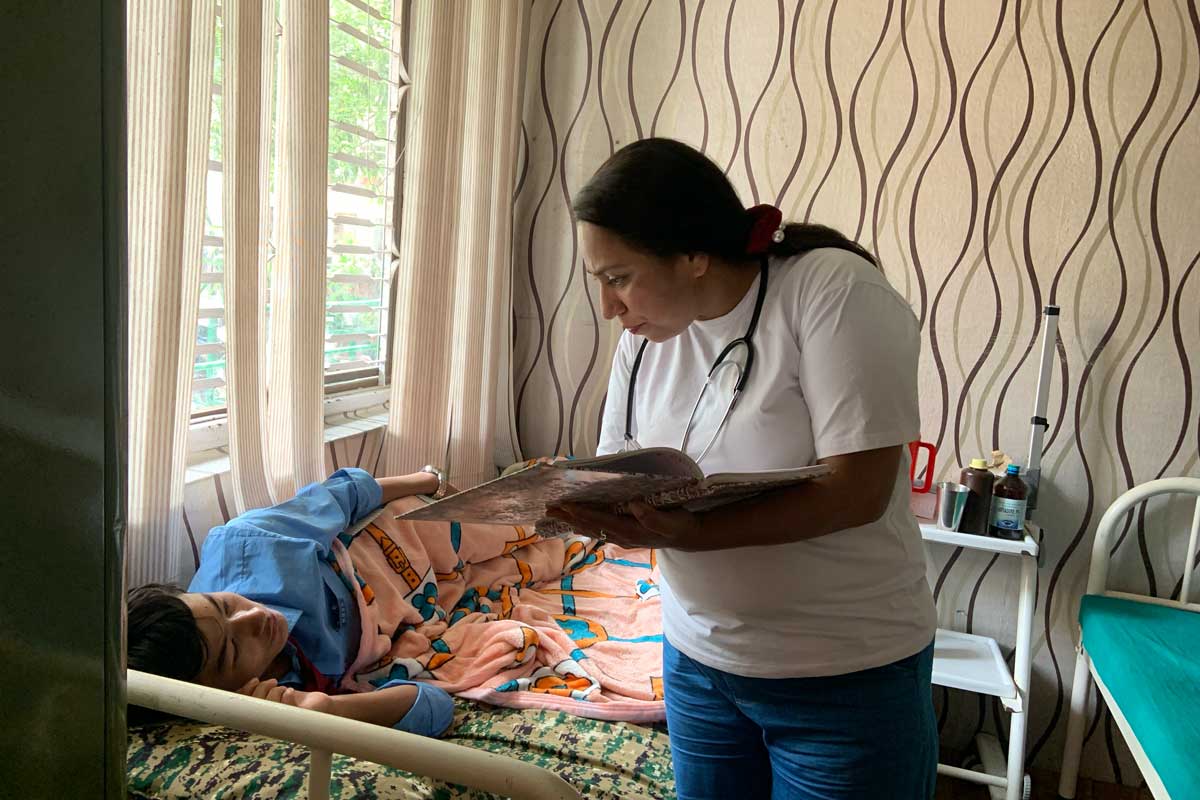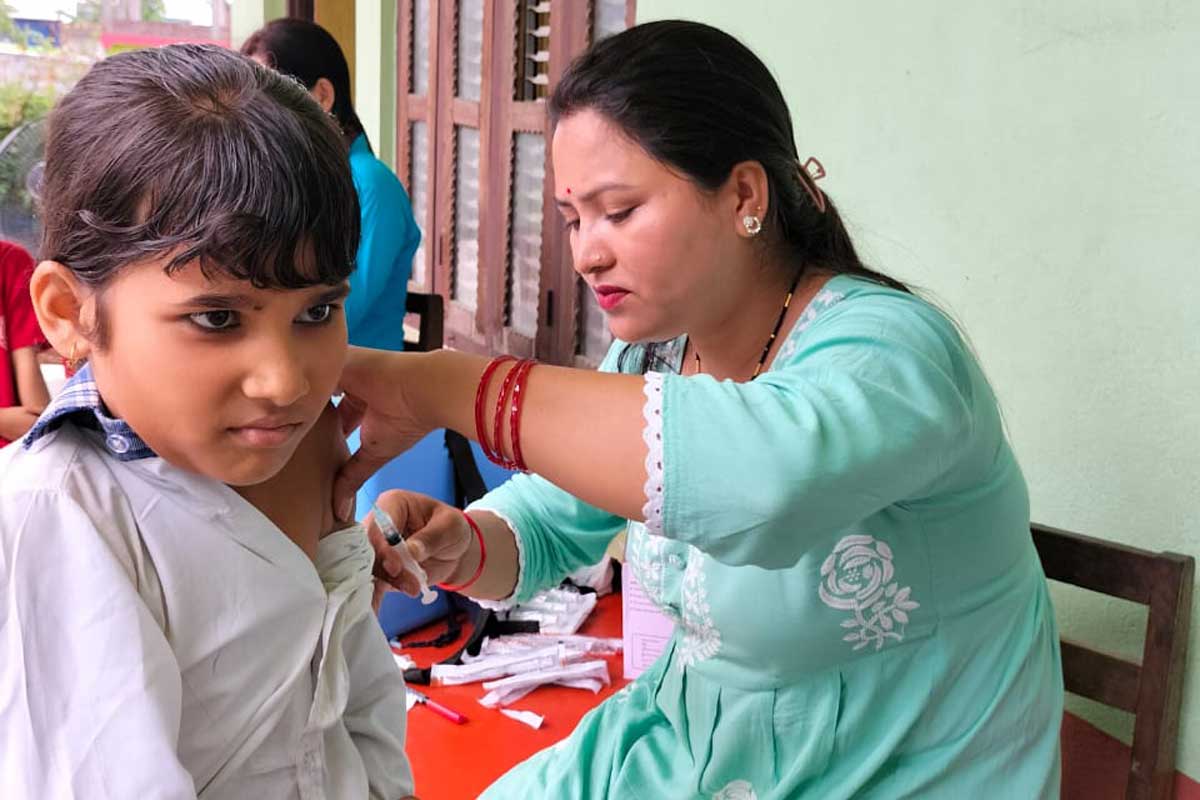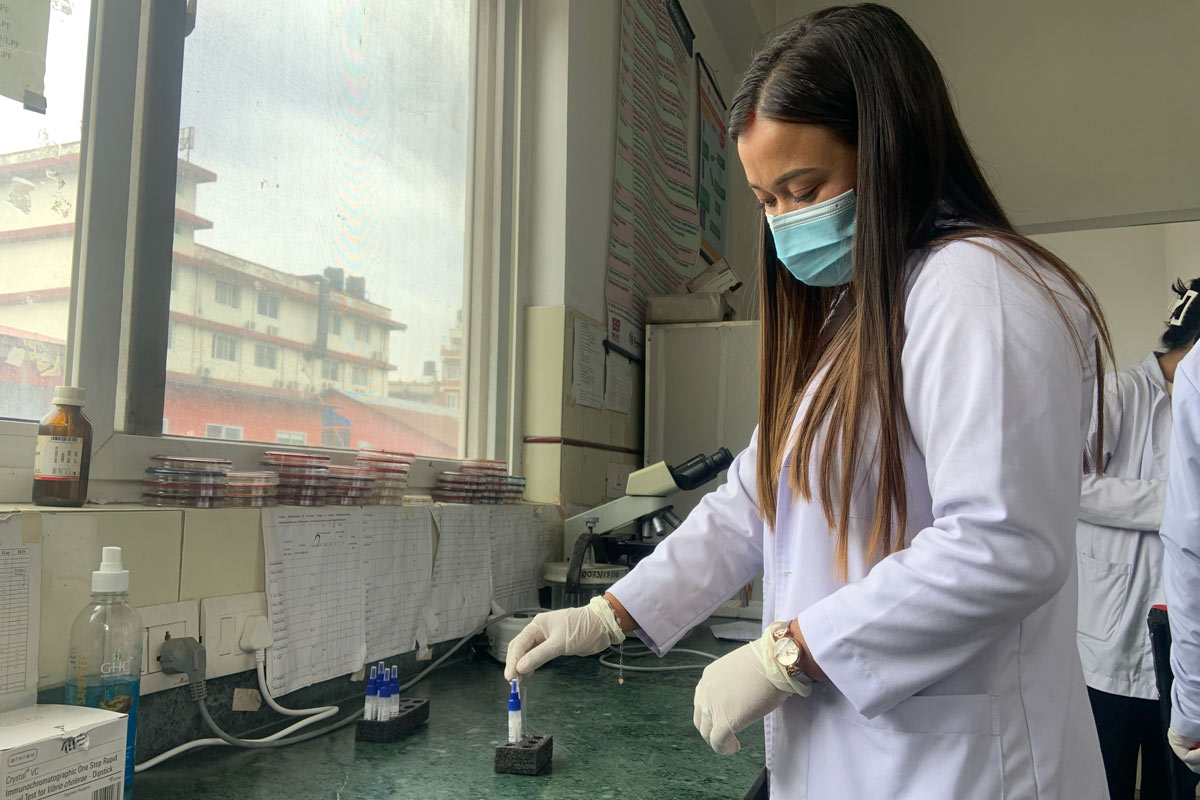In Nepal, school nurses bring healthcare closer to the community
32% of Nepal’s population can be found at school on a given weekday. Making a health worker available to them can have multiple benefits, finds Pragya Timsina.
- 30 August 2024
- 6 min read
- by Pragya Timsina

In early July, Sabina Bharati, a school nurse in a remote part of Nepal’s Karnali province, had just settled into her station to begin her day when an eighth-grade girl came to her in tears. The girl felt so helpless, and so hopeless, that in the preceding days she had made more than one attempt on her life, she confessed to the nurse.
Bharati encouraged her to talk – and felt a freeze steal over her nerves as she listened. The girl had been the victim of a horrible sexual attack. She was bleeding, and she was desperate.
The nurse not only gave the girl medicine for the pain, but also, ultimately, helped her bring her aggressor before the law. The girl, who prefers to remain anonymous, told VaccinesWork that if there had been no school nurse on hand in her moment of need, she thinks she would have died by suicide.

Care at school
Across Nepal, and indeed, in many countries, school-aged children’s needs for basic health care – whether physical and reproductive, or mental – are inadequately met. This is especially pronounced in low- and middle-income countries, which are home to 90% of the world’s adolescents, and 97% of the world’s deaths in people aged 10 to 24.
But schools themselves present an opportunity for efficient intervention. According to Nepali national data, 32% of the country's total population can be found in school. In consequence, Nepal’s government inaugurated the ‘One School, One Nurse’ programme in Bagmati province in November 2018.
An eighth-grade girl told VaccinesWork that if there had been no school nurse on hand that day, she might have died by suicide
Right from inception, it offered two major advantages: bringing the health care establishment closer to large numbers of children, and creating jobs for Nepal’s nurses, a quarter of whom were unemployed in 2019. In the years since, the programme has been extended to all provinces of the country, and now includes about 1,300 community schools.
Port in the storm
Sabina Bharati’s student-patient is far from alone in experiencing problems that have both physical and mental health components. According to the World Health Organization (WHO), in Nepal, 10% of children and adolescents experience a mental disorder, but most of them do not seek help or receive care. Suicide is among the commonest causes of death among adolescents and young adults globally, and in Nepal.
Sabita Regmi, who has been working as a school nurse in one of the government schools of the capital city, says she is glad to be in a position to spot mental health symptoms in students. Fearfulness, restlessness and heart palpitations are common symptoms that children report to her. In addition to one-on-one care and counselling, Regmi also teaches the students about the symptoms of depression and other mental illnesses.
Addressing reproductive health issues of children and adolescents has been another important role of Nepal’s school nurses. The nurses in the school not only provide free sanitary pads to menstruating girls, but also help them tackle any other problems related to their hormonal cycles. Both nurses and students report that, with the assistance of the school nurse, many girls feel more secure at school than at home during their periods. The government has also been able to leverage the programme to distribute iron tablets against anaemia.
Hira Niraula, head of the Nursing and Social Security Division of Nepal’s Department of Health Services, proudly told VaccinesWork that according to preliminary data from an ongoing study, the school dropout rate has drastically reduced in zones where the ‘One School, One Nurse’ programme is operating successfully – particularly among girls.

Community megaphone
Ram Shankar Yadav, whose son attends a government school at Baneshwor in Kathmandu, first came to know that cholera had been rapidly spreading in the Kathmandu Valley from his son.
Soon after the cases of cholera started rising in capital, nurses in the school began teaching the students about the disease and modes of prevention. Yadav was extremely happy to learn proper hand-washing techniques, as well as about the preparation of life-saving oral rehydration solutions, from his son. Everybody in his family is now well informed about mode of transmission, preventive measures and warning signs of cholera.
“The school dropout rate has drastically reduced in zones where the ‘One School, One Nurse’ programme is operating successfully – particularly among girls.”
- Hira Niraula, head of the Nursing and Social Security Division of Nepal’s Department of Health Services
Bala Rai, one of the pioneers of the school nurse programme, shared her positive experience about the rapid dissemination of health information during last year’s dengue outbreak as well. According to her, the government can reach each and every family in the community via the school nurse. And, time and again, this strategy has been proven effective for creating public health awareness.
A node in the public health system
The Nepal Demographic and Health Survey (DHS) report for 2022 says that 25% of children below the age of five are suffering from chronic malnutrition in Nepal. In response to that trend, the government has decided to integrate the school nurse programme with the campaign against malnutrition.
The school nurses are trained for proper anthropometric assessment of school-going children, such that they can detect signs of malnutrition, stunting and low body weight among children. Similarly, they’re also able to reach out proactively, teaching kids about balanced diets, and the prevention of recurrent childhood infections.
Have you read?
Where available, the HPV vaccine is administered to girls by the school nurse, and the typhoid vaccine is also being provided via school nurses in endemic areas.
Finally, the nurse is on hand to provide first aid in the event of accidents: Bhawana Ojha, currently working as school nurse in Kathmandu, remembers transporting severely injured children to hospital after administering primary care on campus.
Further to go
Despite having all these advantages, the programme has not reached every nook and corner of the country. Only 1,300 government schools in Nepal have so far enrolled nurses – a fraction of eligible schools (of the 27,990 community schools in the country, only those with at least 300 students, of which at least 30% are girls, are eligible). Many schools that brought in a nurse have reportedly had to discontinue the programme due to various socio-political issues.
However, the Nursing and Social Security Division is working day and night to make this programme more effective and extensive. Head of division Hira Niraula has a strong belief that nurses in the school are the important bridge between the community and the health care system, and this programme could help Nepal achieve several health milestones.
More from Pragya Timsina
Recommended for you







